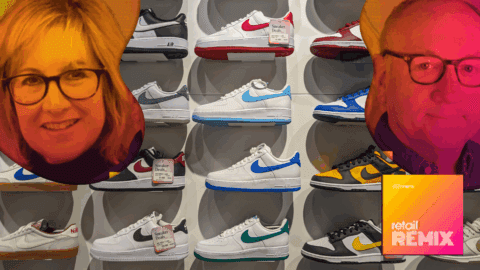Walmart, Target and The Home Depot are the three most valuable brands for 2012, according to the “Best Retail Brands 2012” report from Interbrand, a leading branding consultancy. The annual study uses three key factors to determine the overall value of a brand: financial performance, its role in the consumer purchase decision process and its ability to secure the delivery of expected future earnings.
Brand value reflects the increased demand generation and premium that the brand provides its owners. Overall value can be used to guide brand and C-level managers to make better, more informed decisions. For example, knowing the brand’s value allows companies to determine the effectiveness of their branding and marketing efforts and overall return on investment. Additionally, the value is useful in assessing the resources that should be allocated to brand development.
Released in February 2012, the fourth annual report names the 50 Most Valuable U.S. Retail Brands. (See accompanying list of Top 50 U.S. brands for 2012.) The full list also describes growth statistics for each brand and specific actions taken to improve brand experience. In addition, the report looks at leading international brands and reveals the most prominent global trends in the retail sector. Research was conducted in partnership with the Interbrand Design Forum, the consultancy’s retail experience group.

Smart Brands Invest In The Future
The comprehensive, 57-page research document reveals a variety of facts, trends and issues that point to the reasons why some brands are perceived as more valuable than others. “One of the most compelling lessons from the list is that the best brands didn’t stand idle, waiting for further signs of recovery,” Bruce Dybvad, CEO of Interbrand Design Forum told Retail TouchPoints. “They contributed to recovery by anticipating their customer’s desire to return ― not to shopping as usual — but to something better. For the most part, companies have invested in better store experiences and put more capabilities into the hands of their shoppers.”
He said the brands that grew most in value this year exercised a long-term focus on putting brand at the center of the enterprise to deliver increased demand and premium over their competitors, despite challenging economic circumstances. “These brands have a common strategic advantage: they know who they are and communicate that in an authentic way that reinforces their relevance to their audience. Brands driven to deliver relevance and differentiation, and which integrate brand management with operations to leverage consumer changes into long-term relationships, can win outsized gains,” he stated.
In 2011, Interbrand saw companies increasing store counts and evolving their store experiences rather than holding steady with current tactics. Some continued to improve their respective brand experiences. For example, Old Navy addressed shoppers need to get in and out of the dressing room quickly, and nearby. The retailer installed “quick change” booths in the middle of store, so shoppers don’t have to walk to the back of the store to try on an item. This enabled hurried shoppers to try on single items with speed and convenience, effectively removing a pain point and increasing sales. Other companies leveraged technology to improve the customer experience. The Home Depot, for one, invested heavily in in-store technology to aid associates in assisting customers and better manage inventory.
Omni-Channel’s Potential To Revolutionalize
While online spending continues to grow, from almost 7% to nearly 9% of all U.S. retail sales in 2011, according to the Interbrand report, the retail industry as a whole has barely scratched the surface of mastering the integrated omni-channel environment. For Walmart and Target, online revenue accounts for less than 2%. And yet, a successful omni-channel strategy has the potential to revolutionize retail, Dybvad told Retail TouchPoints. “Retailers will find that the digital and physical arenas complement rather than compete, and together can increase sales and lower costs,” he said. “To achieve this, entrenched anti-digital retailers must overcome their shelf-centric way of thinking. Brand-led companies have an advantage when it comes to the adoption of a new perspective that allows them to integrate disparate channels into a single profitable presence.”
Top U.S. Retailers
Based on Interbrand’s three key assessment factors, the Top 10 retailers and their movement on the list are as follows:
- While the Walmart brand value decreased by 2%, to $139.19 million, it maintained its number one position on the Top 50 list;
- Target grew by 1%, reaching $23.44 million;
- The Home Depot gained 8%, finishing the year at $22.02 million;
- Moving to number four, CVS/Pharmacy was up 5%, at $17.34 million;
- Best Buy was down 11%, falling to the number five spot at $16.75 million;
- Remaining number six, Walgreens was up 4%, at $15.01 million;
- Coach had a notable 16% growth, moving to the number seven position, at $13.44 million;
- Sam’s Club fell to number eight, though its $12.85 million brand value was up 4%;
- Amazon.com’s whopping 32% growth helped it retain its number nine position, at $12.75 million; and
- Moving into the Top 10 for the first time, eBay was up by 16%, at $9.80 million.
The report highlighted Amazon.com as a brand to watch: Though it held its number nine position, its 32% brand value increase made it the fastest riser on this year’s list.
Additionally, 10 other brands grew by double digits:
- Tractor Supply (18%);
- Coach (16%);
- Costco (16%);
- eBay (16%);
- Dick’s Sporting Goods (14%);
- Whole Foods Markets (12%);
- Publix (11%);
- Victoria’s Secret (11%);
- Family Dollar (10%); and
- Nordstrom (10%).
Overall, average growth by U.S. retail brands in 2011 was 4%. Interestingly, the threshold for making this year’s U.S. Top 50 list grew by more than 90% percent: A brand had to have a value of at least $771 million to make the list this year. The strong lift in value required to make the list is driven by two major factors: the economy and improved brand management, according to Dybvad: “The primary driver is a financial change in which the economy is expected to have turned the corner in late 2012 to early 2013, generating a more optimistic three-year economic forecast and where stronger brands disproportionately gain in that improvement over weaker brands,” he reported. “The second driver is that the brands on the list have improved brand management faster than other retailers and therefore have more of their performance and value driven by the brand.”
Beyond the U.S., Tesco, Carrefour, Aldi, Zara, and Woolworths ranked as the number one retailer in their respective markets — all holding their top spots from 2011.
Interbrand’s “Best Retail Brands 2012” report can be accessed here.












